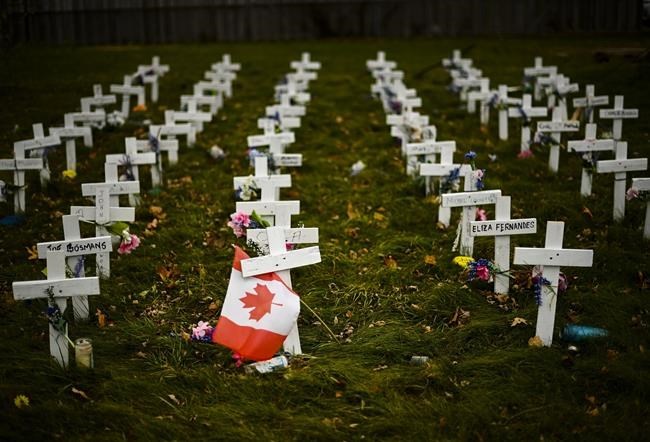The number of people who would have died from a COVID-19 infection is likely to be much higher than recorded because death certificates don't always list the virus as the cause of a fatality, experts say.
Dr. Nathan Stall, a geriatrician at Sinai Health in Toronto, said deaths that have been recorded as a result of COVID-19 only reflect those who were tested for it.
"But there are going to be people who died in excess of what we normally expected, who might have been infected and never got a test and went on to die."
The underlying cause of death in 92 per cent of 9,500 fatalities was recorded on medical certificates as COVID-19 in a November study by Statistics Canada. In the remaining eight per cent of cases, cancer, dementia, Alzheimer's disease or other chronic conditions were most commonly found to be the underlying cause of death.
Stall said while the 92 per cent figure is higher than what he expected it to be, he thinks the actual number is likely to be even larger.
"I think this also speaks to the confusion people have of how to actually classify a cause of death," he said, adding those who die are rarely tested to determine if they had COVID-19.
He said the better indicator of the pandemic's death toll will be excess mortality, when more deaths than were expected are recorded during a specific time period.
Dr. Roger Wong, a clinical professor of geriatric medicine, said the accurate recording of deaths from COVID-19 is a challenge around the globe.
The World Health Organization and medical regulatory bodies in Canada have provided guidelines on how to record COVID-19 related deaths.
Wong said an incomplete or inaccurate record of mortality data can have public health implications.
Scientists and researchers will get a better understanding of COVID-19 in people with long-standing health conditions by recording as many details as possible in death certificates, said Wong, who is also a vice-dean in the University of British Columbia's faculty of medicine.
"It has implications, not only for COVID-19 deaths, but implications for all deaths," Wong said.
He said the first line of a death certificate states the immediate reason a patient died, while the second and subsequent lines record health conditions leading to the cause of the fatality.
"The immediate cause of death may not capture the underlying cause of death," he said.
In patients who die from COVID-19, they could have also suffered from acute respiratory distress syndrome and pneumonia because the virus affects the lungs, he said, giving an example.
In those cases, the first line would list respiratory syndrome as the cause of death, and the second and third lines would say what led to it, which could be pneumonia and COVID-19 respectively, Wong said. It is important to note what caused the pneumonia, he said, adding in a number of cases it could be COVID-19.
Long-standing illnesses or comorbidities, such as diabetes, heart or kidney disease, also complicate how deaths are recorded, Wong said, as those patients are at higher risk of infection.
"COVID-19 should be recorded as an underlying cause of death, not so much as a concurrent health condition that happened to be there," Wong explained.
Stall used cardiopulmonary arrest as another example of fatalities that don't always list COVID-19 as a factor.
"Well, everyone dies of cardiopulmonary arrest, because everyone dies when their heart stops beating and the lungs stop breathing. That's not a cause of death. That's the mechanism of death," Stall said.
"The cause of death is COVID-19, and ultimately all events lead to cardiopulmonary arrest but that's a common example that I'll sometimes see as a cause of death when it certainly is not the cause."
There needs to be better education and "a bit more" quality control in how deaths are recorded, he said.
"It's not something we learn a ton about in medical school or something that's given a lot of attention and consideration by individuals who are often in a rush to do it so the body can be released to the morgue or funeral home."
The StatCan study said international guidelines are followed to record COVID-19 as the cause of death where the disease "caused, or is assumed to have caused, or contributed to death."
Stall said accurately recording deaths helps stamp out misinformation about the pandemic as well as gauging how the country has been affected by it.
"We are looking at the picture and the complete scope of what COVID-19 has done to our population in our country," Stall said.
"And in order to look after the living, you need to count the dead."
This report by The Canadian Press was first published Feb. 27, 2021
Hina Alam, The Canadian Press



